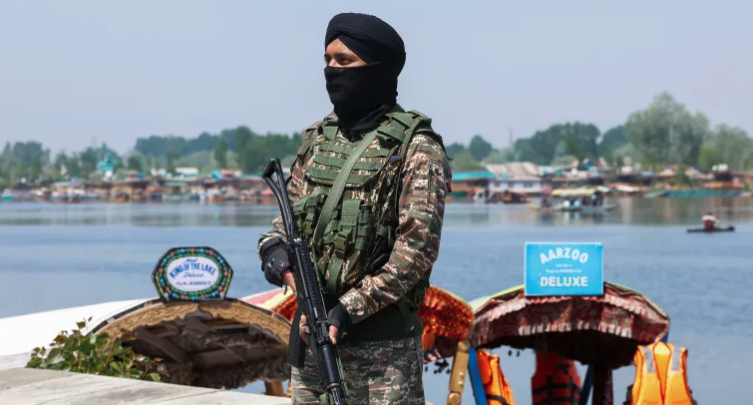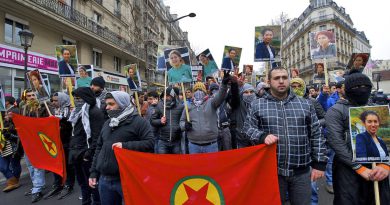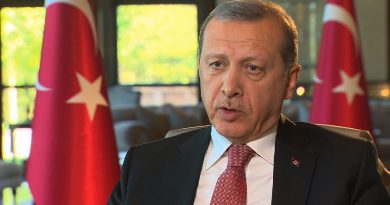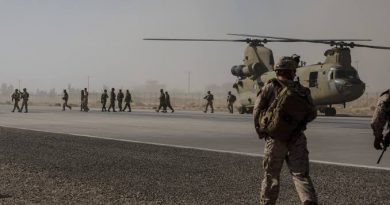OPINION: Kashmir Valley Red Flagged between Tourism and Terrorism
Now, Kashmir is at a crossroads again. The hard-won calm is in danger, and people are left wondering if the dream of a normal life was always meant to be just that—a dream.
The valley is calm, with only the distant sound of gunfire and the fast footsteps of tourists who want to leave before nightfall. In the grassy areas of Pahalgam, where people used to laugh with the sound of the Lidder River, there is now a red flag waving. This flag is a warning and shows that something is wounded or damaged.
New Mirage in the ancient Valley
For many years, the government talked about growth and peace, calling it “New Kashmir.” They said it was a place ready for business and tourists, with its problems being fixed through development. They pointed to the new train lines, hotels, and the increase in visitors as signs that the region was finally leaving its troubled past behind. But then, in April, when 26 tourists were killed, this carefully built image was destroyed. The hope, promises, and positive stories quickly faded on the bloodied grass of Pahalgam. This attack did more than take innocent lives; it showed the deep questions hiding underneath the government’s positive talk and statistics.
Pahalgam turned into Battleground
For the people in Kashmir, having tourists return meant more than just making money. It brought a spark of hope, offering a chance to show the world that their valley was more than just bad news headlines and conflicts. However, when attackers targeted people by asking their names, their religion, or how they belong to the area, it made a frightening point: in Kashmir, your identity could be relevant.
Attacking outsiders, particularly Hindus, is not new. This has been allegedly a common tactic since the beginning of the conflict. It is meant to send a message to New Delhi and the world that Kashmir is not as safe as it appears. Some believe the militants are not only trying to control the land but also trying to decide who is accepted there and who isn’t.
Normalcy to Darkness
After Article 370 was removed, Kashmir seemed like it was slowly coming back to normal. Markets were busy again, and Dal Lake was full of boats with tourists from all over India. The well-known meadows echoed with laughter, a sound that was missing for many years. Local elections were held again after ten years, and the economy—which had suffered a lot from conflict—began to recover. In fact, people in Kashmir were earning even more than those in Delhi and Punjab. For the first time in years, Kashmiris started to hope that peace might finally start to grow in a place that had seen much sadness.
However, the Pahalgam attack changed everything, like a sudden storm in spring. Twenty-six people, including tourists and locals, were killed in a meadow that symbolized Kashmir’s return to normal life. This was more than just an act of violence; it was a clear message. It tried to drag the valley back into the darkness, reminding everyone that old problems were not gone. Now, Kashmir is at a crossroads again. The hard-won calm is in danger, and people are left wondering if the dream of a normal life was always meant to be just that—a dream.
The Crisis of a decade
Prime Minister Modi was in Saudi Arabia when he heard about the tragic events. He was in discussions with Crown Prince Mohammed bin Salman on important subjects like energy and trade. As soon as he realized the seriousness of the situation in Pahalgam, he decided to return to India without delay. His urgent flight back to Delhi highlighted the critical nature of the crisis. Upon arrival, Modi’s motorcade hurried through the rainy streets, and he quickly convened emergency meetings with Air Chief Marshal Amar Preet Singh. The entire nation was attentive, eager to see Modi’s response. In the valley, there was a strong awareness that Delhi’s attention was once again focused on them, bringing both the hope for justice and the risk of further tensions.
Muslim Parliamentarian Asaduddin Owaisi blames Pakistan
Owaisi, known as a great critic of Prime Minister Modi, spoke out strongly against the attack, saying Pakistan acted like ISIS by attacking innocent people in India. He asked what type of faith could justify such violence. He also argued that Pakistan should not claim to be a nuclear power while causing terror in other nations. Owaisi warned that India will not remain silent against these threats. His remarks were very clear, particularly when he blamed powerful groups and terrorist networks in Pakistan for purposely trying to stir up religious tensions in India. He accused them of targeting non-Muslims and trying to create conflicts between Hindus and Muslims.
Pakistan’s former Cricketer blames Pakistan
After the Pahalgam massacre, Danish Kaneria, a former leg spinner from Pakistan, raised his voice when the government in Islamabad remained silent. He questioned, “If Pakistan has no part in the Pahalgam terror attack, why hasn’t Prime Minister Shehbaz Sharif publicly condemned the incident? Why have your military forces become suddenly more alert? Deep down, you’re aware that you’re protecting and supporting terrorists. Shame on you.” His early remarks challenged the usual denials and diplomatic confusion. In a region already suffering from violence, his accusation spread like ripples in still water, breaking the silence and drawing attention from across borders.
Pakistan’s Response and the diplomatic, border war
Islamabad insisted it was not connected to the militants. They called for an independent investigation and accused Indian leaders of using the tragedy as a “false reason” for military action. India reacted strongly. They expelled Pakistani diplomats, suspended the Indus Waters Treaty, and closed their borders and airspace to Pakistani flights. Pakistan responded by closing its ports to Indian ships, shutting its own airspace, and threatening to leave the 1972 Simla Agreement, which is crucial for maintaining the Line of Control in Kashmir. This breakdown in diplomatic communication, suspension of important agreements, and back-and-forth economic and military actions caused tensions to rise quickly. These actions led to fights across the LoC, pushing the two nuclear-armed neighbours into a new border conflict.
What’s Next for Kashmir?
Kashmir, known as “paradise on earth,” is now going through tough times. Its beautiful rivers are witnessing violence and struggle. The United Nations is urging everyone to act carefully and ensure the safety of people. India is at a crucial point where it must decide whether to respond with anger or choose a wiser and more peaceful path. To move forward, India needs to focus on smarter intelligence, advanced surveillance technology, and building strong trust with local communities. This can turn local people from passive onlookers into active partners in maintaining safety. By addressing wounds, restoring dignity, and ensuring the protection of all Kashmiris, India can work towards ending the violence. This approach will help Kashmir regain its peaceful identity, allowing a song of peace to echo through the mountains and reach across the world, rather than a song of sorrow.
Disclaimer: Views expressed by writers in this section are their own and do not reflect Milli Chronicle’s point-of-view.



